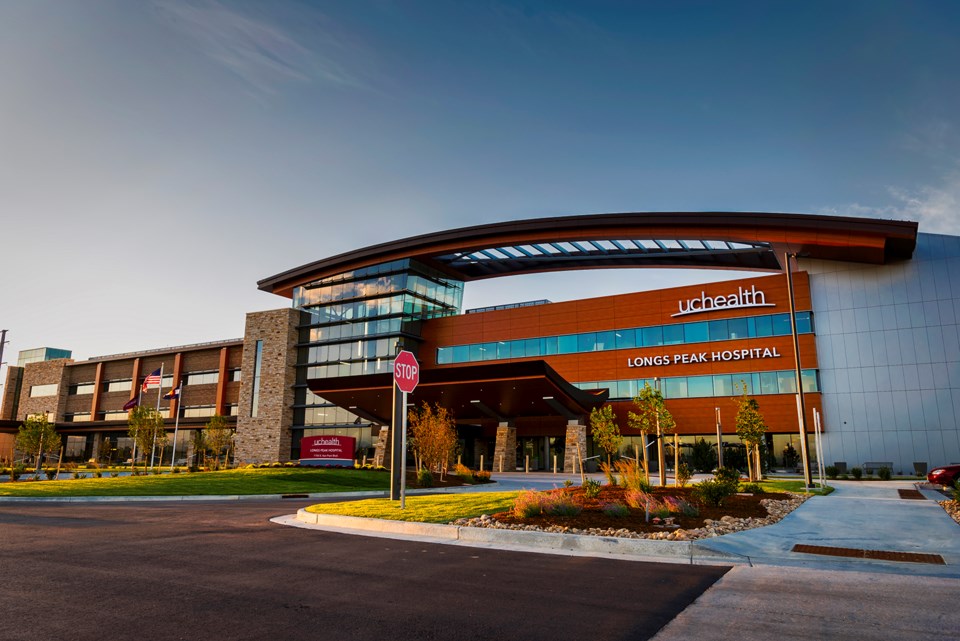Phyllis DallaBetta is an 80-year-old former nurse practitioner. In July, she suffered a stroke and was taken to the UCHealth Longs Peak Hospital emergency department where she was admitted and stayed for four days. During her stay, she felt as if the hospital’s protocols got in the way of patient care.
Upon admission, DallaBetta was considered to be at risk of falling. She was asked to remain in bed unless a nurse could help her out. An alarm was placed on her bed that would sound if she were to get up, she said.
DallaBetta initially understood the initial requirements of the hospital, however, felt she was unnecessarily kept on the protocol.
During her stay, DallaBetta was evaluated by several specialists including a physical therapist and an occupational therapist. Each determined that — within their area of expertise — she was stable and able to resume activity, including walking alone.
“Everyone of those tests said I was fine but they could not remove that label, so I had to stay in the bed,” DallaBetta said.
The alarm placed on her bed was meant to sound when she tried to get out of bed. However, DallaBetta said, the alarm would go off more often such as time when she was readjusting her position in bed or her hospital gown.
“The nurses were driven crazy by the requirement to come in and to put me on a ‘no fall,’ That was a requirement — that they told me — was from the CEOs who were really not medical people,” DallaBetta said.
DallaBetta grew frustrated by the alarm and the protocol. She felt as if the doctors and nurses were required to respond to the alarms which allowed less time for them to respond to patient care.
“It has them running around, doing all that stuff, without doing patient care,” DallaBetta said. “They can’t do anything except respond to all the bells.”
According to Cathy Davis, director of patient services at UCHealth, when a patient is admitted into the hospital, the staff view their say as a partnership to improve the patient’s health.
“We don’t just decide to put all of these things on you now that you are coming into the hospital. We actually do research and we are looking at data coming in nationally and even broader,” Davis said.
UCHealth assesses its patients upon arrival and uses an algorithm that combines many factors including age, co-morbidities, medications and other medical factors to determine which protocols to put into place. Those protocols are assigned based on data collected nationally, Davis said.
“It’s not simple, it is very detail-oriented and it then individualizes the care for you,” she said. “No one person decides, it is an evidence-based algorithm that is fed into our system that would drive that decision making.”
While protocols are typically determined by algorithms, Tiffany Petrone, director of clinical quality and risk management, said the staff is included in the conversation because they are the most knowledgeable about the patient’s care.
“People get into healthcare to keep people safe and to do a good job and to heal people. So they are really invested in the process and I think they run because want to keep the patient safe,” Petrone said.
The hospital uses alarms and other forms of technology, such as video responses, to assist the staff with patient care, Davis said. The alarms are meant to remind patients to wait or ask for help in order to keep them safe while also giving staff the time to respond to the patient, said Petrone.
Petrone said that the protocol system updates every four hours and allows for protocols to be revised based on the patient’s changing condition. In some cases, that may include reducing a patient’s fall risk status or it may mean adding extra supports to meet a patient where they are, she said.
According to the UCHealth staff, protocols are meant to keep patients safe and to ensure healing. They are in place so the staff know what the patient’s health goals are and to execute care to the best of their ability. However, Davis admits that sometimes communication can become a barrier.
“They all need to understand the why. We all want to know what we’re doing and why we’re doing it and does it make a difference,” Davis said. “The big opportunity … is our opportunity to talk more to our patients to communicate the why to them and help them understand. We really need to work and continue to emphasize the why and how, together, we are going to have them transition successfully from our facility and safely home.”



